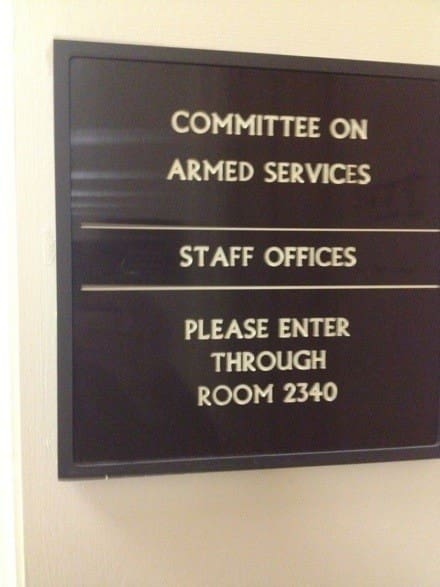As we understand it, Retired Major General (IL ARNG) and Rep William Enyart’s (D- IL) amendment to the 2014 National Defense Authorization Act was introduced to the full House Armed Services Committee and passed 32-30. If enacted it will…
require all military services to use a joint combat camouflage uniform, including color and pattern variants designed for specific combat environments.
First off, for those of you unfamiliar with the legislative process, this is just the first hurdle and it’s still quite a way from becoming law. It’s not as bad as I had feared but I’m concerned it still ham strings the individual services. Below is a simplified version of what has to happen.
In order to become the law of the land, it must first pass a vote in the full House of Representatives. Then, the Senate will vote on their version of the NDAA which may or may not include similar language. Either way, the two versions of the NDAA will most assuredly contain differences which will have to be hammered out in Conference Committee made up of members of both chambers of Congress. Once those differences are worked out, a conference report detailing what is in the final legislation is voted on by both the Senate and House of Representatives. After approval, it goes to the President to be signed. Barring a veto it becomes law. At any point in this process expect the services to weigh in.
This is by no means a quick process. The NDAA will become law some time after the Army’s June 14th announcement.
I find this language shortsighted. Service leaders need the latitude to accomplish their mission and at some point, that may require different uniforms. Despite assertions to the contrary, prior to the adoption of the MARPAT MCCUU in 2003, the services did not all wear the same uniform. For example, the Navy wore a work uniform that was not camouflaged and was unlike anything the other services used. But, It was the right uniform for their mission.
And lastly, while the services should work together, Congress telling them that they have to use the same individual equipment to accomplish their missions sets a bad precedent. In the past we have seen Congress force unwanted combat systems on the various services that place undue burdens on force structure and readiness. The services are the experts at defending the Nation and they should decide what tools are required to make that happen.






















































































































